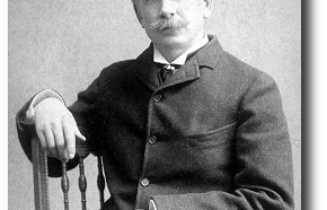Away up in the heart of the Allegheny mountains, in Pocahontas county, West Virginia, is a beautiful little valley through which flows the east fork of the Greenbrier river. At a point where the valley road intersects the old Staunton and Parkersburg turnpike, a famous thoroughfare in its day, is a post office in a farm house. The name of the place is Travelers’ Repose, for it was once a tavern. Crowning some low hills within a stone’s throw of the house are long lines of old Confederate fortifications, skilfully designed and so well “preserved” that an hour’s work by a brigade would put them into serviceable shape for the next civil war. This place had its battle — what was called a battle in the “green and salad days” of the great rebellion.A brigade of Federal troops, the writer’s regiment among them, came over Cheat mountain, fifteen miles to the westward, and, stringing its lines across the little valley, felt the enemy all day; and the enemy did a little feeling, too. There was a great cannonading, which killed about a dozen on each side; then, finding the place too strong for assault, the Federals called the affair a reconnaissance in force, and burying their dead withdrew to the more comfortable place whence they had come. Those dead now lie in a beautiful national cemetery at Grafton, duly registered, so far as identified, and companioned by other Federal dead gathered from the several camps and battlefields of West Virginia. The fallen soldier (the word “hero” appears to be a later invention) has such humble honors as it is possible to give.
Like this:
Like Loading...
Read more


